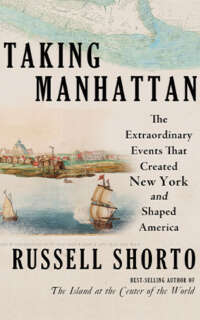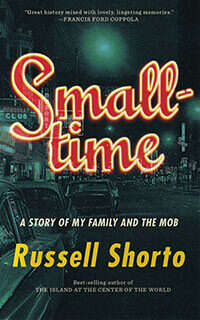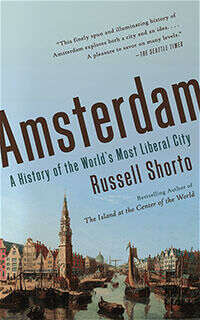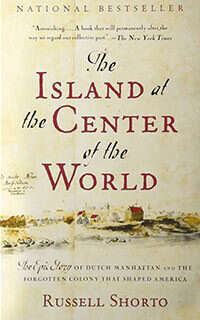A Short-Order Revolutionary
The New York Times Magazine
by Russell Shorto
January 11, 2004
It starts — just as your mother told you it should — with a good breakfast. Two fried eggs, yolks bouncing brightly. Burly strips of bacon with alternating strata of red meat and glowing fat. The potatoes are nubby and brown, the toast thickly wedged, a light crunch followed by a satisfyingly dense chew. Strong coffee. And milk: don’t muddy it in the coffee; take it straight and unhomogenized, a big cold mouthful, aswirl in lowing bovine immediacy.
Tod Murphy, the man behind the breakfast, literally and figuratively, sits in a green vinyl booth in his 60-seat eatery, the Farmers Diner, on North Main Street in Barre, Vt., and deconstructs my meal. ”The potatoes come from Will Allen’s farm over on the Connecticut River. We get our bread from a bakery in Northfield, and believe it or not the eggs come from a little egg farm right in downtown Stowe. Earl and Amy out in Strafford supplied the milk and butter, or rather their Guernseys did. And the bacon came from Andrew.” Andrew is 15 years old, and in his first foray into hog farming he produced what your correspondent is ready to nominate the finest bacon on the planet. But we’ll get back to Andrew shortly.
Murphy — who is himself a farmer — started the Farmers Diner 18 months ago with a modest-seeming goal: to rely on local ingredients. Since then it has become something of a cause célèbre, to the extent that a Formica-counter establishment that showcases patty melts and macaroni and cheese can. It is probably safe to say that it is the only business that both Gourmet and WorldWatch Institute devoted attention to last year. Such business innovators as Ben Cohen and Jerry Greenfield of Ben & Jerry’s and Paul Hawken of Smith & Hawken have offered advice. Investors are lined up behind Murphy, and, incongruously, some are using the F‑word — franchise — and talking about taking it regionally, even nationally.
Why the fuss? Because ”local food” has become almost an oxymoron. In an era in which 10 companies supply more than half the food and drink sold in the United States, in which processed and prepackaged are the norm and hydrogenated oil is practically a national beverage, in which the average apple, chicken breast or lettuce head travels more than 1,500 miles from grower to consumer, the Farmers Diner is so old it’s radically new. There has been a rumbling of concerns among some people — activists, moms — over health and environmental issues related to the centralization of food. Long-distance travel means a push for longer shelf life, through chemical additives or genetic modification. Massive monocultural enterprises — vast expanses of corn, numberless cattle crammed into gargantuan feedlots — require a heavy reliance on antibiotics and pesticides. The current mad-cow scare exists only because the food system is so far-flung. But lying beneath the concerns, surely, is the simple, ineffable yearning for lettuce, tomatoes and burgers that taste the way they’re supposed to.
Upscale restaurants have long showcased select ingredients from area farms. But in those places, local tomatoes or snap peas appear on the plate alongside Madagascar trout, oysters from the Sea of Japan or whatever other delicacies the chef needs to express his creativity. Tod Murphy’s diner is different from the ground up, in prices (cup of chili: $2.75; grilled cheese sandwich: $3.50) and in philosophy. The diner has a purpose: to support nearby family farms, or rather to demonstrate the conviction that — economically, historically, naturally, logically — food is supposed to be local, and that it can be again. Its business model is to swim directly against the globalization current. To that end, being a diner — an icon of the American culinary and cultural landscape — underscores the point: Remember what we used to be? Remember when taste and tradition mattered? Real food for regular people.
The Farmers Diner, which Murphy started with $240,000 of capital, stunned its investors by hitting its break-even point in its first year: about $1,500 a day in gross sales. ”We’re ahead of what we projected,” Murphy said, ”and I’m surprised at the number of customers who get it. I thought most would just think of it as a diner, but they see what we’re doing.” While the place has a philosophy, it lacks dogma. It will never get all of its food locally. ”It’s got to be recognizably a diner,” Murphy said, and that means serving things like orange juice and coffee, items that, unless global warming kicks into high gear, aren’t going to come from Vermont’s farms. When he opened the place, he was getting 60 percent of his products from area farms; it’s now at 70 percent, and he says he thinks he will reach 80.
Murphy is 38, wears his hair in a ponytail, has a sleepy expression and talks in an earnest, hushed, NPR kind of delivery. It’s impossible not to be duped, on first sitting down with him, into thinking you are in for a laid-back, yoga-and-granola kind of encounter. Twelve hours later, however, he is still talking, and by then you’ve realized his personality is in fact a seamless mix of organic farmer and high-octane businessman. He can go on forever about the minutiae of franchising. At the same time he’ll tell you, ”If you want to know whether a piglet will grow into a nice fat hog, you measure its father’s scrotum.” The Farmers Diner is a blend of these two trains of thought, and of Murphy’s two experience paths. Farming is in his blood: he grew up on his family’s southeastern Connecticut dairy farm. It had long since gone out of business, but when he was a kid, his great-grandmother told him how they used to drive into town on Saturdays and sell eggs and butter to stores. Later, he and his wife went into franchising, creating a coffee company. It fizzled, but he learned a lot, which he’s now putting to use.
Chuck Lacy, former president of Ben & Jerry’s and now the head of the Barred Rock Fund, an investment group that supports sustainable agriculture initiatives, was one of the first people Murphy went to for backing for his venture. ”I turned him down flat,” Lacy said. ”I’m a farmer myself, and I know the reality. The local infrastructure is gone.” But Murphy’s doggedness paid off. Lacy agreed to make a modest $35,000 investment in the first restaurant as a trial balloon, and he is now a big booster. ”Tod has done it,” he said. ”He’s competing with diners that are getting their chicken cutlets from Sysco or Tyson, that are cheaper, that are shipped from who-knows-where, processed and pumped with antibiotics. He’s forged this farm network, and he’s showing that there’s a market out there of people who think there’s nothing like eating a fresh egg, who like knowing where their food came from.” As president of Ben & Jerry’s, Lacy took it from $50 million in sales to $150 million, and he says he thinks the Farmers Diner is another food business rooted in Vermont that could catch on nationwide.
But the challenge of recreating his great-grandmother’s distribution system in the global age is difficult almost to the point of absurdity, as Murphy cheerfully admits. ”When I first went looking for investors, lots of people liked the idea, but nobody believed it would work,” he said as the waitress brought the check. ”And they had good reason to believe we’d never get to this point. Finish your coffee, and I’ll show you why.”
The landscape of this part of northern Vermont is wild: rough hills, pine trees shrouded in fog on a cold fall day, seething rivers running by white steepled churches. Tod Murphy has roamed these hills relentlessly the past couple of years, seeking out suppliers. Americans used to bandy about a variable but significantly low statistic: 5 percent of the population are farmers. Or 3 percent, or 6. In stating it, you were bragging that we didn’t have to work the land, that in this brave new era, ingenuity had replaced grunt effort. In fact, that figure is now below 1 percent, and it represents the primary challenge to Murphy. It means that to get his business off the ground, he had to find either holdouts, who had stubbornly refused to take their grips off the plow, or else others who, like him, have gone back to the land.
He found both. Will Allen — a dead ringer for Willie Nelson — has been an organic farmer since 1968. He and his wife, Kate Duesterberg, farm a swath of bottomland alongside the Connecticut River. Both are longtime activists in the sustainable-agriculture world, and their vegetables are nearly as legendary as they are. Murphy wanted to get his produce from them, but there was a catch: they don’t deliver because they sell nearly all of their produce from road stands.
Meanwhile, 25 miles from downtown Barre, Earl Ransom and Amy Huyffer farm a primeval hilltop of 600 acres, a landscape of cows, hogs, hay and mud. Earl was born on the farm, but it has been through several incarnations, and the family started their dairy business only two and a half years ago. No sooner do we take a seat in their dining room than they begin clunking down old-fashioned milk bottles, emblazoned with the name Strafford Organic Creamery. Whole milk. Two percent. Heavy cream. Maple milk: a Vermont specialty, made by mixing in some maple sugar. ”I’m really proud of my skim,” Earl says, pouring a glass, and it actually tastes like milk, not like the watery skim you buy in cartons. Everything Earl and Amy do is organic, starting with the grain that their cows eat. And so far it’s working: they’re making a bit of money. They sell their product to co-ops and restaurants and make their own deliveries in a refrigerated truck.
The Farmers Diner gets its milk, butter and ice cream from the couple. The result is a 16-ounce glass of milk that costs $1.95, as compared with $1.49 at the Friendly’s down the road. So far, enough customers have been willing to pay those modest premiums in exchange for the taste and satisfaction of the genuine article, to help keep Tod Murphy’s dream alive. But if you’re rebuilding local networks, you don’t rest at simply carrying out a transaction between producer and seller; you work the angles. In this case, Murphy figured out a three-way deal that would get him his vegetables. One of Will Allen’s field hands who lives near the dairy farm drops off the Farmers Diner vegetable order on his way home, and Earl and Amy’s milk truck in turn brings the produce to the diner along with the milk delivery. ”We want to support Tod,” Huyffer said. ”This is a network, and it only works if we work together.” Still, the network isn’t without its problems. If the dairy truck breaks down, or if winter weather makes the winding dirt road from the farm impassable, the diner does without its dairy and vegetables.
Another old-timey vignette played out at the farm of John and Janine Putnam, who make an award-winning cheese from the milk of their grass-fed Jersey cows that winds up in the macaroni and cheese at the Farmers Diner. ”Tod came here looking for a cheese for the diner,” Janine said, ”and we were talking about our whey problem.” Whey is a byproduct of cheese making, for which there aren’t many uses, yet the Putnams hated to waste it. ”We mentioned that we’d heard some people feed whey to their pigs,” John said, ”but we didn’t have pigs. Tod’s eyes lit up.” Murphy knew that the Putnams’ 15-year-old son, Andrew, was looking for a part-time job. He suggested that Andrew raise eight hogs on the family farm and guaranteed that he would buy them. So Andrew did: he fed the piglets and watched them grow while dreaming of the pair of skis he would buy. ”It wasn’t too hard,” Andrew said, though he admitted to a slight twinge when Murphy showed up to take the grown pigs away to make bacon.
So that’s Tod Murphy in action: making endless small, back-country deals. But the difficulties don’t stop there. In fact, they’ve just begun. Stay with this particular deal a bit longer. Murphy has bought eight hogs from Andrew Putnam. How does he get from hogs on the farm to bacon on the breakfast plate?
Just down the road from the Farmers Diner is a small corrugated metal building. It’s tiny inside — a few modest-size rooms, one hot and smoky, the others refrigerated and smelling clean, cold and bloody. It’s one of the smallest U.S.D.A.-inspected meat-processing facilities in the country, and one of the few left that are not controlled by the large food companies. Pork bellies hang on racks; three employees hack at pink slabs of raw pork and shove handfuls of it into ham netting. ”The first thing I learned about trying to source local food is, meat is the issue,” Murphy said. ”Vegetables are easy. A restaurant that uses locally grown vegetables, that’s nice, but so what? If you’re a diner, you need a steady supply of bacon, sausage and ham. Maybe you can find a small farmer to supply you, but he doesn’t have the facilities for slaughtering. And who’s going to smoke the meat? I couldn’t find a processor in the state who wanted to do it. I didn’t see how we’d be able to demonstrate the model without meat processing. So I bit the bullet and realized I was going to have to do that myself.”
Murphy rewrote his business plan and rustled up $160,000 more from his investors, and now he’s in the meat-processing business as well. He’s not yet licensed to slaughter — for that he goes to ”slaughter spots” at larger slaughterhouses — but the five employees cut steaks and chops and smoke and cure bacon, ham, sausage, turkey, fish and cheese. It’s hard work, made harder still by the need to comply with government regulations geared
toward huge companies. ”You see the challenge, right?” Murphy asks as we leave. ”All these food facilities that are so basic to society — the creamery, the local butcher — they’re gone. You have to build them yourself.”
But once you do — once you have the production, processing and distribution figured out — you have the makings of your own little food empire.
In contrast to the hundreds of miles a month Murphy logs staying in touch with his 35 suppliers and tracking down new farmers to join his network, and to the mountain of paperwork and endless string of phone calls he juggles to keep his rural Rube Goldberg device functioning, consider the manager of the Friendly’s just down the road from the Farmers Diner. The menu options aren’t so different between the two places. Yet the entire food order for Friendly’s is handled with a single digital form, which the manager (who asked not to be named) fills out and sends to the franchise’s single supplier: the company’s regional distribution center in central Massachusetts. ”It takes me about five minutes,” he says. ”And then the big Friendly’s truck shows up with everything.” The Friendly’s experience is more or less the norm for restaurant managers today. Tod Murphy’s is … unique.
Needless to say, it takes great reservoirs of energy and passion to create what is in effect the ultimate anti-franchise restaurant. But Murphy’s dream is more complicated still. He wants it both ways: a local diner that’s also a franchise. As it turns out, the retro space in northern Vermont is only Step 1 in a vaster plan: a mere test kitchen, as it were. That’s why it has gotten the attention of some fairly big money. ”We were interested in the Farmers Diner because it’s socially responsible,” said Deborah Ciolfi, president and C.E.O. of Gravestar, a private asset-management company that has invested in the diner, ”but if it’s a one-off, it doesn’t have an impact. We envision hundreds of Farmers Diners in regions around the country.”
The next phase that Murphy and his backers envision is a ”pod,” consisting of four diners and a central food-processing plant where animals from area farms would be slaughtered and local organic tomatoes would be turned into vats of salsa or pasta sauce. The greater Boston area seems the most likely location, since it has some continuing tradition of small-scale farming and a population that might appreciate what the diners would offer. Then the pod would be duplicated in other areas. Branding is part of the strategy. The processing plants would turn out sausage, smoked cheese and tomato sauce with the Farmers Diner label. You’d have a Farmers Diner on the local strip alongside Wendy’s and Taco Bell. This is Murphy’s fully realized dream: ”I want to blend my great-grandmother’s business model with a multiunit one that relies on economies of scale.”
It’s a quirky-sounding combo, but only to the uninitiated. ”You can’t assume small and local means lacking in major league entrepreneurial energy,” says Woody Tasch, C.E.O. of Investors’ Circle, a venture-capital group with more than $90 million invested in socially responsible businesses. ”Some of our members feel that after the last decade, the emphasis no longer needs to be on growing a business into a billion-dollar public company in a few years. We need to support projects that will create long-term value for society.” Murphy made a pitch to the group, and some of its members are lining up behind the expansion of the Farmers Diner concept, the next phase of which will require about $6 million; so far about 50 investors have expressed interest. ”When you find an entrepreneur like Tod Murphy, you have to try to help him, and see where it goes,” Tasch said. ”Some investors will want to blow it up into a McDonald’s. The trick is to keep it rooted in the local.”
The real trick may be to find a way to clone Tod Murphy. ”The Farmers Diner works because Tod is willing to do the incredible amount of legwork and network-building,” said Brian Halweil, a WorldWatch Institute researcher who made a study of the diner last year. ”He’s really committed. Plus, it’s a tight-knit community. It remains to be seen if what he’s done can be duplicated elsewhere.”
There’s one other challenge: getting people to put up with the limitations that come with localness. In Vermont in winter, you spell ”vegetable” with four letters: r‑o-o‑t. Sitting down to lunch at the diner, I ordered the pork tenderloin special. ”The vegetable of the day is beets,” the waitress declared, as if throwing down a challenge. ”Any substitute?” ”Nope!” she said cheerily. ”All right,” I said. ”Beets it is.” They were O.K. Sort of.
#





